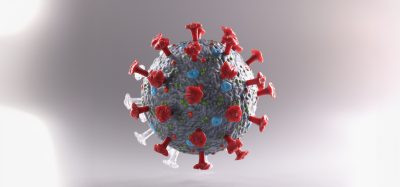‘Lava lamp’ vesicles show how cells could self-organise
Posted: 17 July 2023 | Izzy Wood (Drug Target Review) | No comments yet
Looking at how cells can self-organise could help us understand the way cells manage biochemical processes.


The inside of a living cell is crowded with large, complex molecules. New research from University of California-Davis (UC Davis), US, on how these molecules could spontaneously organise themselves could further our understanding of how cells manage their essential biochemistry in the crowded space.
This research, published in Nature Chemistry, may also shed light on how the first living systems appeared and how they evolved their complexities.
Eukaryotic cells contain organised structures, or organelles, bounded by a lipid membrane. An example is the mitochondria, which generate energy in cells. In recent years, scientists have discovered that in addition to these organelles, groups of molecules can spontaneously form into temporary organelle, without a membrane, to carry out some specific function.
“There may be simple physical mechanisms to create specialised ‘designer organelles’ on demand,” said Atul Parikh, Professor of Biomedical Engineering at the UC Davis.
Using a simplified model of a cell, Parikh’s laboratory has discovered how mixtures of polymers can parse into phase-separated droplets, like oils in a lava lamp, and that these droplets interact with the cell membrane in unexpected ways, including affecting the exterior structure of the cell.
Wan-Chi Su, a graduate student working with Parikh, created artificial vesicles about the size of a living cell. These are essentially bubbles with a synthetic membrane, containing water with two polymers dissolved in it. Both polymers dissolve in water but repel each other, so if mixed together and left to themselves they would separate into two phases.


Polymers that repel each other can spontaneously phase-separate inside artificial vesicles, like oils in a lava lamp. Interaction between droplets and the cell wall limits the size of the droplets and causes bubbling of the outside of the membrane. (Credit: Wan-Chih Su, UC Davis)
Su and Parikh found that when they withdrew water from the vesicles, the polymers would start to form separated droplets, as expected. But instead of progressing to larger and larger droplets, they found that growth was stopped by interactions between the polymer droplets and the inside of the vesicle membrane, creating a mosaic of droplets.
These interactions also effected the outside of the vesicle, causing a bubbling affect. This looks similar to an affect seen in living cells in some circumstances.
“Coupling to the cell boundary prematurely stops phase separation and creates a mosaic of droplets. These 3D droplets inside the vesicle, interestingly, reorganise molecules in the 2D membrane, thus also signalling to the outside of the vesicle,” Parikh explained. The researchers are confident that the phenomenon is generally applicable and not specific to this combination of molecules.
The work shows how purely physical interactions (polymers repelling or attracting each other) – can give rise to complex organisation in a simplified cell-like system, Parikh concluded.
“We are elucidating the physical and chemical principles behind biology,” he continued. “It might say something about how life may have come about in the first place.” The researchers plan to expand the work to more complex systems, including living cells.
Related topics
Polymers, Structural Biology
Related organisations
University of California-Davis (UC Davis)
Related people
Atul Parikh, Wan-Chi Su







